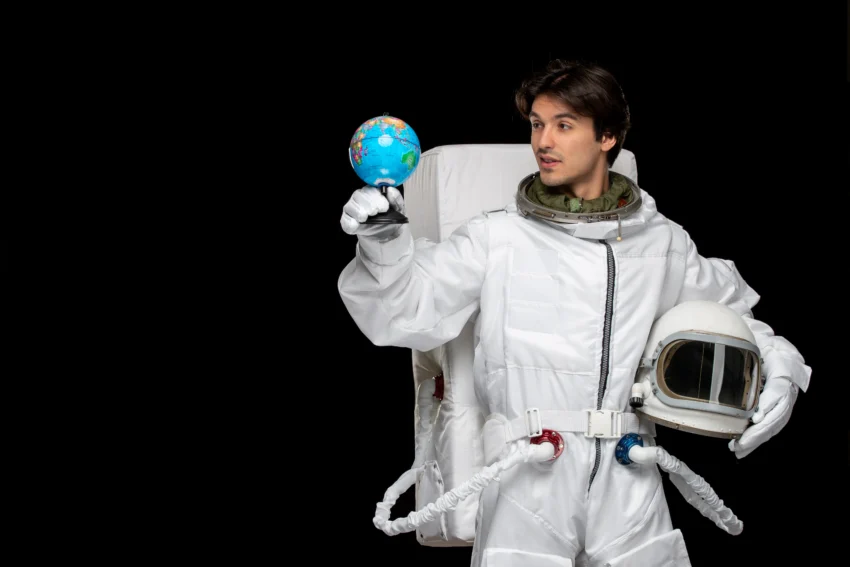Introduction
Becoming an astronaut is a dream for many. But beyond the glamour of spacewalks and zero‑gravity, there is a rigorous, multi‑year process known as Astronaut Training. In this guide, we will explore in detail what astronaut training entails, its phases, required skills, institutions offering it, and how to prepare. We’ll also answer frequently asked questions to help fully understand the landscape.
What is Astronaut Training?
Astronaut training refers to the specialized education, physical conditioning, technical preparation, and mission‑specific training that candidates undergo to become capable of operating in space environments. It covers many domains:
- Physical fitness & health
- Technical & engineering knowledge
- Spacecraft systems, survival training
- Scientific and exploratory mission preparation
- Teamwork, psychological resilience
Why Astronaut Training is Important
Astronaut Training is essential because space is unforgiving. Minute errors can jeopardize missions. Training ensures:
- Astronauts can safely operate spacecraft.
- They can respond to emergencies (fire, depressurization, equipment failure).
- They can perform scientific tasks efficiently (experiments, sampling, geology).
- They can maintain mental and physical health during long missions.
- They can work effectively in teams under stress and isolation.
Key Phases of Astronaut Training
Astronaut Training typically proceeds in several phases. These may vary depending on the space agency (NASA, ESA, Roscosmos, ISRO, etc.), but core elements are shared.
| Phase | Description |
|---|---|
| Selection Phase | Candidates are selected by space agencies based on qualifications: education, physical fitness, psychological suitability. |
| Basic Training | Covers fundamental skills: spacecraft systems, spaceflight mechanics, physical conditioning, swimming/survival, zero‑gravity simulation. |
| Advanced Training / Mission‑Specific | Focused on the specific mission: EVA (spacewalk), robotics, lunar or Mars analog training, geology (for planetary missions), etc. |
| Simulations & Flight Training | Use simulators, parabolic flights (“vomit comet”), underwater training for zero‑g, cockpit time, etc. |
| Continuous Training & Updates | Even experienced astronauts train continuously – to learn new crafts, updated systems, medical refreshers, etc. |
Core Components of Astronaut Training
Let’s dive deeper into what makes up a full program of Astronaut Training.
1. Educational & Technical Foundations
- STEM Education: Strong background in science (physics, biology), engineering (mechanical, aerospace, computer), mathematics.
- Systems & Instrumentation Knowledge: Learning spacecraft components (life support, navigation, propulsion, reaction control).
- Physics of Spaceflight: Orbital mechanics, microgravity, radiation, thermodynamics.
- Science Mission Skills: Conducting experiments, geology (for lunar/Mars missions), astrobiology.
2. Physical Fitness & Health
- Cardiovascular endurance: Running, swimming, cycling.
- Strength Training: For lifting and maneuvering in space suits, handling equipment.
- Flexibility & Mobility: To reduce injuries, enable movement.
- Health screenings: Vision, hearing, cardiovascular health, psychological evaluation.
- Nutrition and Sleep Management: Critical in space missions.
3. Simulated Environments
- Zero‑Gravity / Microgravity Training: Parabolic flights, drop towers.
- Underwater Training: Neutral buoyancy labs simulate weightlessness; used for spacewalk training.
- Isolation/Confinement Simulations: Missions in caves, polar stations or special habitat labs (analog missions).
- Thermal / Radiation / Vacuum Exposure Education: Safe protocols for exposure.
4. Survival Training
- Water survival: For launches and aborts where splashdown might happen.
- Wilderness / Emergency Survival: Land‑based emergencies; sometimes desert or forest survival.
- Escape & Evacuation: Protocols for spacecraft emergencies.
5. Extravehicular Activity (EVA) Training
- Using space suits.
- Simulating spacewalks in neutral buoyancy tanks.
- Working with tools in gloved hands.
- Safety in vacuum conditions.
6. Robotics and Piloting
- Operating robotic arms (e.g. Canadarm) or rovers.
- Training in piloting spacecraft or docking maneuvers.
- Simulators to practice docking, landing, navigation.
7. Scientific / Mission‑Specific Training
- Geological field training (for lunar or Mars missions).
- Scientific experiment protocols (biology, geology, physics).
- Planetary surface operations.
- Sample collection, instrument setup.
8. Psychological and Team Training
- Working in confined and isolated environments.
- Stress management, coping with long durations away from Earth.
- Cross‑cultural/team communication skills.
- Decision making in emergencies.
Institutions & Space Agencies Offering Astronaut Training
Some of the major organizations:
- NASA (United States)
- ESA (European Space Agency)
- Roscosmos (Russia)
- CNSA (China National Space Administration)
- ISRO (Indian Space Research Organisation)
- JAXA (Japan Aerospace Exploration Agency)
- Space agencies of UAE, etc.
Additionally, private entities like SpaceX, Blue Origin, or in future commercial space travel providers may also provide training segments.
Requirements to Be an Astronaut Candidate
While each space agency has its own criteria, commonly required are:
- Educational Qualifications: Bachelor’s degree (often Master’s or PhD) in STEM field.
- Professional Experience: Engineering, pilot, medical, scientific research, or military background.
- Physical Fitness: Good vision, healthy cardiovascular, hearing, and general fitness.
- Psychological Stability: Ability to perform under stress, long isolation.
- Citizenship / Language Skills: Depending on agency; often fluency in English; sometimes other languages.
Typical Duration and Costs
- Duration: Basic training may last 1‑2 years; mission‑specific training adds several months to years.
- Costs: For candidates selected by national space agencies: costs are borne by agencies. For private or commercial participants, costs may be very high (training, transport, equipment).
Advancements and Future Trends
Astronaut Training is evolving. Recent trends include:
- Analog missions: Like Mars or Moon analog habitats on Earth (desert, Arctic, or underwater) to simulate missions.
- VR / AR training: Virtual reality and augmented reality to rehearse missions.
- Commercial astronaut training: For space tourists or private missions.
- Interplanetary mission preparation: For Moon and Mars missions, more geological, life sustainability, radiation exposure training.
- Cross‑agency cooperation: Sharing facilities, standards across agencies (e.g., ESA, NASA, etc.).
How to Prepare Yourself for Astronaut Training
If you aspire to become an astronaut, here are steps you can take now:
- Focus on your STEM education: Strong in physics, mathematics, engineering.
- Maintain high physical fitness: Cardiovascular, strength, flexibility.
- Learn relevant technical skills: Programming, robotics, piloting, environmental science.
- Gain experience in challenging environments: Scuba diving, survival courses, remote field work.
- Develop soft skills: Teamwork, leadership, problem solving.
- Stay informed: Follow space agencies, their astronaut selection announcements, technology developments.
Challenges & Risks in Astronaut Training
Astronaut Training involves significant risks and challenges:
- Physical injuries during training simulations.
- Psychological stress, isolation.
- Exposure to potentially harmful environments (radiation, vacuum).
- Long time commitment.
- High standards—many candidates fail or drop out.
Success Stories & Notable Programs
- ESA PANGAEA: Geological training for planetary exploration missions.
- ESA CAVES: Training in cave environments to mimic exploration missions and team behavior under stress.
These programs illustrate how astronaut training goes well beyond just mechanical or technical skills—it’s about human adaptability and scientific preparation.
SEO Optimization Touchpoints (on‑page)
To tie in SEO best practices using Astronaut Training as primary and focus keyword:
- Include Astronaut Training in the title tag of a web page, meta description, first paragraph, H1 tag.
- Use related keywords: “space training”, “astronaut candidate selection”, “microgravity training”, “spacewalk”, “zero gravity training”, “space mission readiness”.
- Use headings (H2, H3) with subtopics, incorporate keyword naturally.
- Internal linking: link to related content (e.g., space missions, astronaut equipment).
- Use images/alt texts: e.g. “astronaut training underwater”, “spacewalk suit training”.
- Ensure page load speed, mobile friendliness.
Frequently Asked Questions (FAQs)
Here are some common questions people ask about Astronaut Training.
Q1: How long does it take to become an astronaut after selection?
A1: After selection, Basic Astronaut Training typically takes 1‑2 years. Additional training specific to a mission (e.g., ISS, Moon, Mars) adds several more months or even a year or more, depending on complexity.
Q2: Is prior experience in STEM necessary to apply?
A2: Yes. Most space agencies require educational qualifications in STEM (science, technology, engineering, mathematics). Prior research, engineering or piloting experience gives a candidate a strong advantage.
Q3: What kind of fitness standards are required?
A3: Fitness standards are rigorous. Candidates must pass cardiovascular, strength, and endurance tests. They undergo medical examinations including vision, hearing, heart health etc. Must be able to handle high stress, confined environments, and adapt to microgravity.
Q4: Can commercial spaceflight participants undergo astronaut training?
A4: Yes. As commercial spaceflight grows, private training programs are developing. These might be less rigorous than government agency programs, but still involve safety, systems, microgravity exposure, and emergency training.
Q5: How do analog missions help in Astronaut Training?
A5: Analog missions mimic space mission conditions (isolation, remote environments, limited resources). They help train astronauts in decision making, psychological resilience, mission operations in Mars‑ or Moon‑like terrain.
Q6: Is zero‑gravity real training necessary, or can simulations suffice?
A6: Simulations are necessary and important, but nothing fully replaces real zero‑gravity exposure (via parabolic flight, underwater neutral buoyancy). They help prepare the body for disorientation, motion sickness, spatial awareness.
Q7: What are the major contributions of ESA’s PANGAEA and CAVES programs?
A7:
- PANGAEA gives astronauts geological training to prepare them for lunar/Martian surface exploration.
- CAVES exposes astronauts to cave exploration, simulating constraints like darkness, confined passages, team coordination. It strengthens teamwork, navigation, exploration skills.
Q8: How much does astronaut training cost?
A8: For government selected astronauts, the costs are covered by the space agency. For private or commercial participants, costs can be substantial — depending on how much training, the access to facilities, and mission type. Exact numbers vary.
Q9: What is the chance of being selected as an astronaut?
A9: Very small. Thousands may apply; only few are selected. Selection criteria are strict — education, experience, physical fitness, psychological stability, ability to adapt and perform under stress.
Q10: How has technology changed Astronaut Training?

A10:
- Virtual Reality (VR) and Augmented Reality (AR) are used for mission rehearsals.
- Simulations and advanced modeling help in predicting mission outcomes.
- Better materials for suits, life support, and safety equipment.
- Collaboration across agencies to standardize certain training modules.
Conclusion
Astronaut Training is a demanding, comprehensive process combining physical, technical, psychological, and mission‑specific preparation. Whether you aspire to join a national space agency or to take part in commercial space missions, preparation starts now—with education, fitness, skills, and mental readiness. The future of space exploration is expanding rapidly; training programs are evolving, and there may be opportunities for enthusiastic and well‑prepared individuals.
